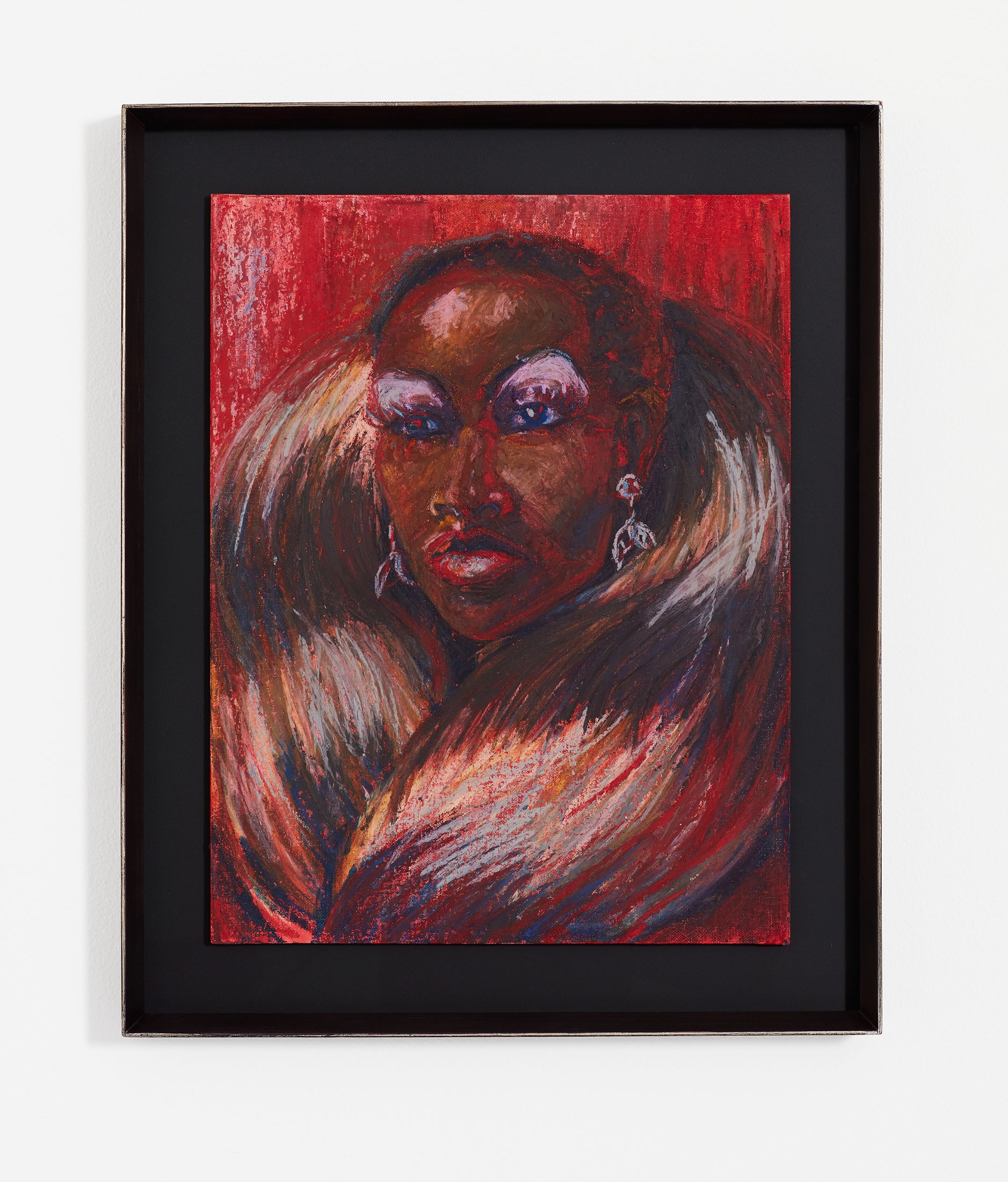Athi-Patra Ruga

In this self-portrait, Ruga performs the part of Clytemnestra, a princess of Greek mythology transposed to his cosmological imaginings, which together compose IiNyanga Zonyaka (The Lunar Songbook). Her appearance among the characters of his invention would be confounding were it not for the eclecticism of his cast. “References to Greek mythology, Christian iconography, Xhosa cosmology, and queer aesthetics make for dense readings but crowded works,” art critic Keely Shinners writes. “And yet, there is something revelatory about this methodology… He returns with archetypes, allusions, ancestral whisperings.” A princess born from an egg, Clytemnestra is recalled in Trojan epics, poems, and plays as a woman of famed deceit, renowned for her suitors and scheming. Here, she is recast from Greek myth to Clytemnestra Brink Iovely, a South African woman of unclear import, dressed in furs and hanging earrings. Adding further complexities to her portrait, the artist plays her part; his performance queering her assumed role, no longer a pawn of Greek gods but a femme figure of self-possessed glamour.
b.1984, Mthatha
Athi-Patra Ruga is an artist of baroque excess. Embellishments and high-gloss finishes characterise much of his work across mediums, be it photographic, performative or sculptural. The petit point tapestries for which he is perhaps best known are rich in colour and detail, sensual in their tactile materiality and bold in their imagery. Such is the artist’s vision of Azania, an African utopia of imagined abundance and indulgence. Ruga’s opulent – even flamboyant – practice centres on the allure of this lost paradise. It proves a compelling counterpoint with which to critique South Africa’s broken ‘rainbow nation’ promise. Ruga, who studied fashion, is particularly attuned to the agendas of aesthetic expression. “With my work,” he says, “I want to create new mythologies and stories to disrupt the body national – I want to disrupt elements of taste, especially when taste is used nationalistically.” Hidden beneath the visual decadence of Ruga's practice is the more serious weight of social criticism.